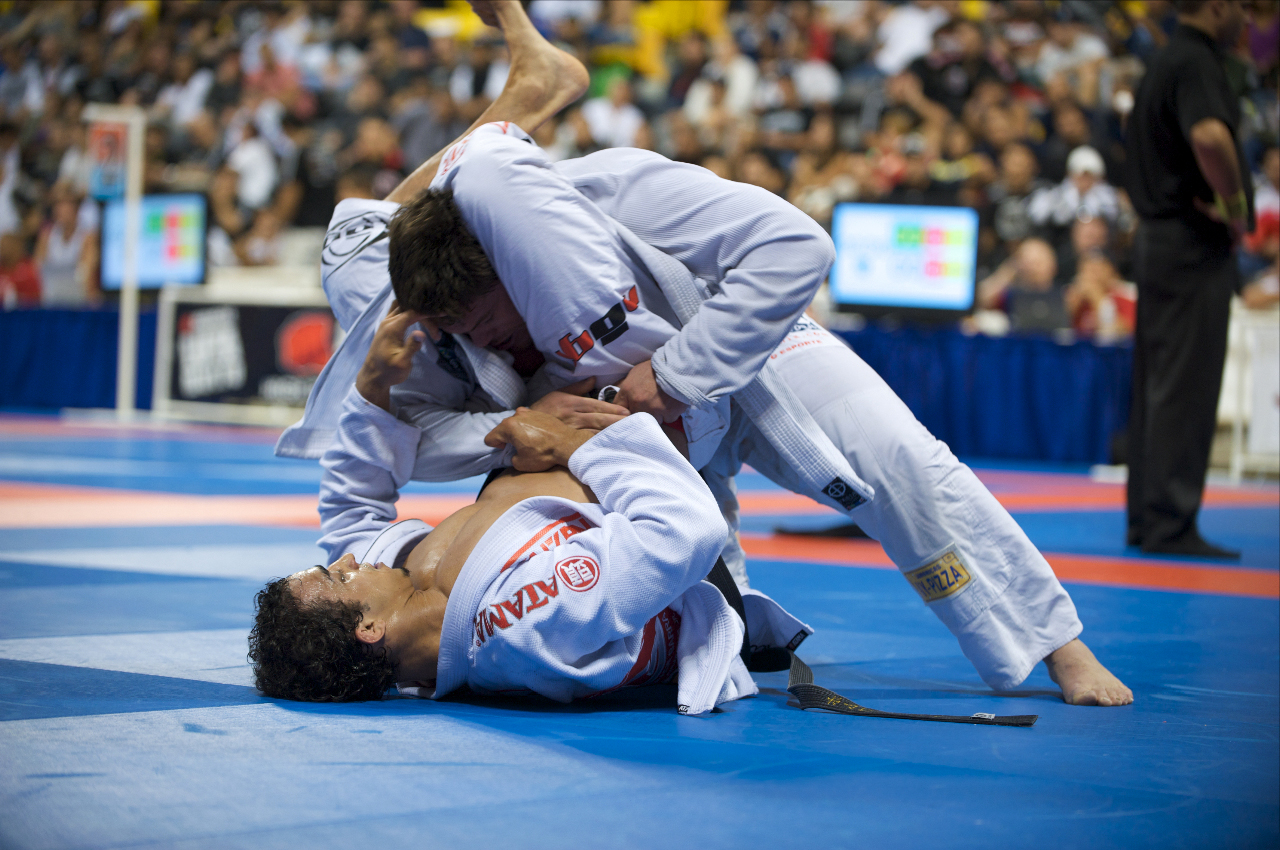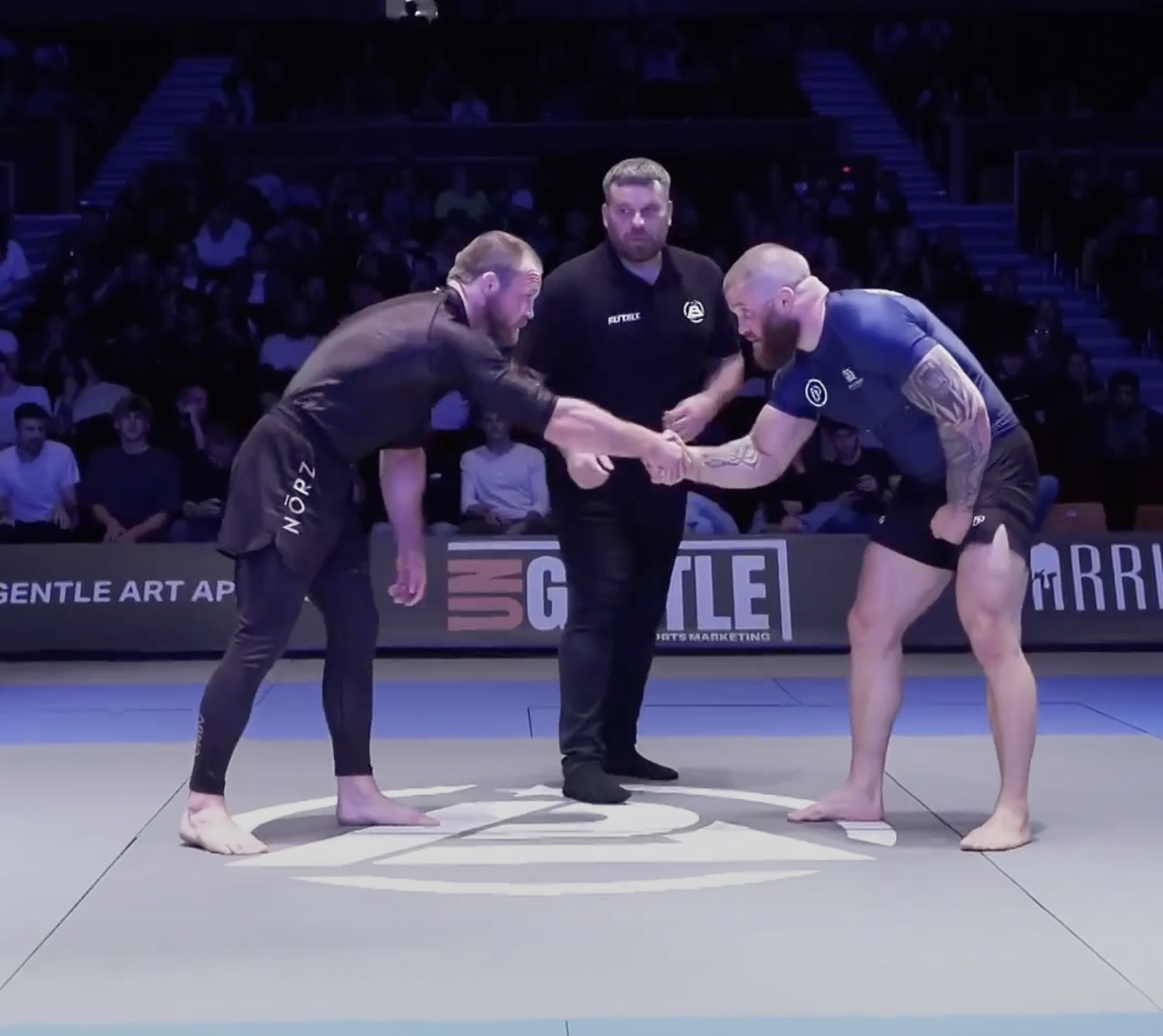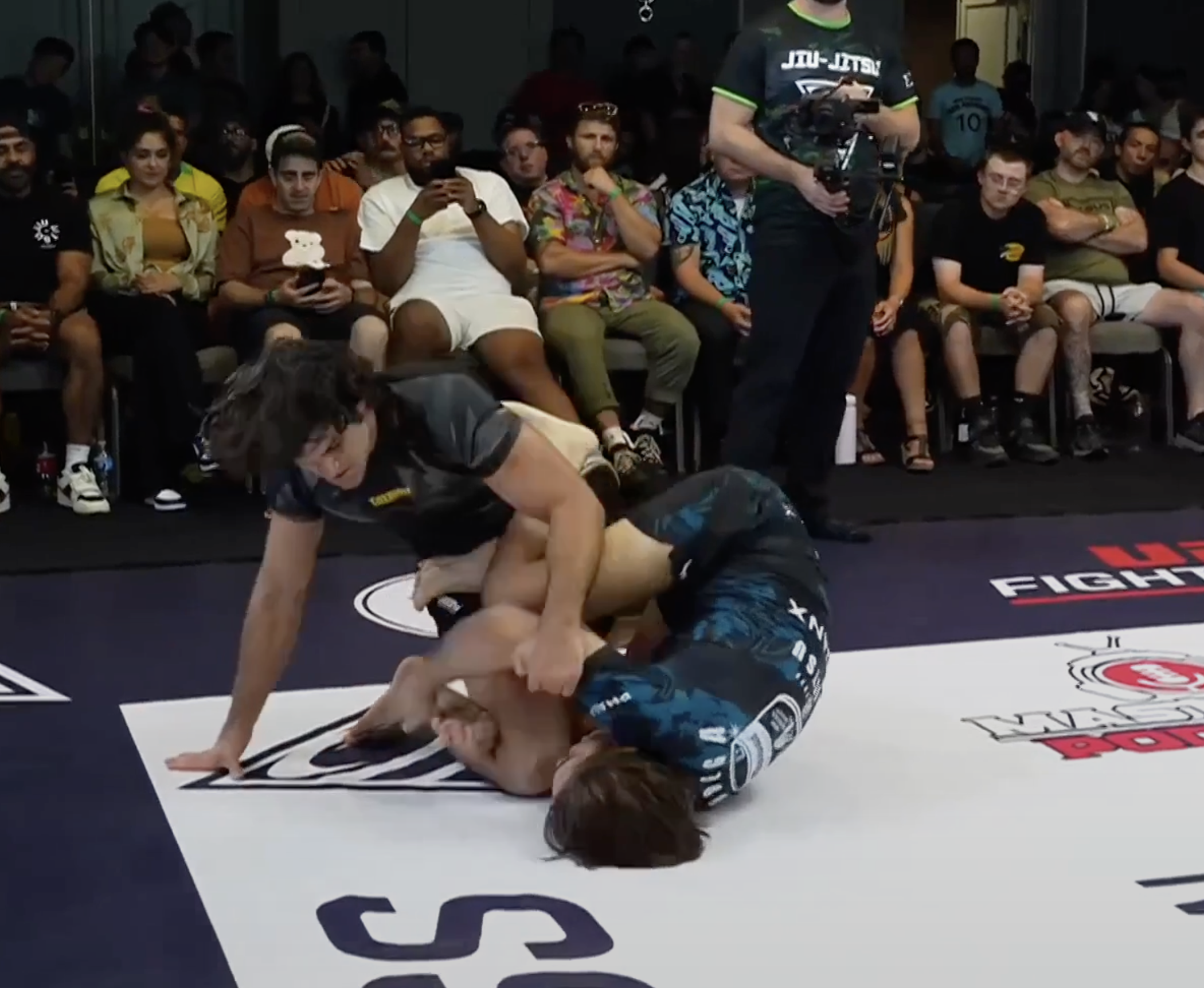Alright, let me break this down for you. Brazilian Jiu-Jitsu has absolutely exploded over the past decade, transforming from something only hardcore martial artists knew about into a global phenomenon. Whether you’ve seen it in UFC fights or heard friends talking about their latest tournament, you might be wondering: what exactly is Brazilian Jiu-Jitsu, and is it right for you?
After 25 years on the mats, I can tell you that BJJ isn’t just another martial art – it’s a complete game-changer that will challenge everything you think you know about fighting, fitness, and yourself.
The Origins and History of Brazilian Jiu-Jitsu
Here’s where it all started: Brazilian Jiu-Jitsu traces its roots back to early 20th century Brazil, when Japanese judoka Mitsuyo Maeda arrived in the country. Maeda, known as “Count Koma,” began teaching traditional Japanese jujitsu and judo to local students, including a young man named Carlos Gracie.
The Gracie family, particularly Carlos and his younger brother Helio, adapted these techniques to create what we now know as Brazilian Jiu-Jitsu. Here’s what makes this story fascinating: Helio Gracie, being smaller and less athletic than his brothers, focused on leverage and technique over strength, developing a system that allowed smaller practitioners to defeat larger opponents.
This philosophy became the cornerstone of BJJ: using technique, timing, and leverage to overcome physical disadvantages. The Gracie family proved the effectiveness of their art through countless challenge matches, eventually bringing BJJ to international attention through the early Ultimate Fighting Championship (UFC) events in the 1990s.
What Makes Brazilian Jiu-Jitsu Unique?
Unlike striking martial arts like boxing or karate, Brazilian Jiu-Jitsu is primarily a grappling art that takes place on the ground. Often called “human chess,” BJJ emphasizes:
Problem-Solving Under Pressure: Every position in BJJ presents a puzzle to solve. Whether you’re trying to escape from underneath an opponent or working to submit someone, you’re constantly adapting and thinking several moves ahead. It’s like chess, but your opponent is actively trying to choke you.
Technique Over Strength: While physical fitness helps, BJJ’s emphasis on leverage means that smaller, more technical practitioners can often defeat larger, stronger opponents. I’ve seen 140-pound women submit 200-pound men using pure technique. This makes it accessible to people of all sizes and athletic abilities.
Live Practice (Rolling): Unlike many traditional martial arts that focus heavily on forms or predetermined techniques, BJJ practitioners spend significant time “rolling” – essentially wrestling with full resistance. This live practice ensures techniques work against non-compliant opponents who are actively trying to stop you.
The BJJ Belt System: Your Journey Through the Ranks
Brazilian Jiu-Jitsu uses a belt ranking system that differs significantly from other martial arts. The adult belt progression is:
White Belt
Every BJJ journey begins here. White belts focus on learning basic positions, fundamental escapes, and developing their “survival” skills. Expect to spend 2-4 years at white belt, though this varies greatly between individuals. Don’t get discouraged – everyone gets smashed at white belt.
Blue Belt
Your first major milestone. Blue belts have developed a basic understanding of BJJ fundamentals and can execute techniques against resisting opponents. This typically takes 2-4 years of consistent training to achieve, and honestly, getting your blue belt feels better than Christmas morning.
Purple Belt
Often considered the “working belt” of BJJ, purple belts have developed their own game and can teach lower belts effectively. They understand not just how techniques work, but why they work. Expect 2-3 years between blue and purple.
Brown Belt
Brown belts are highly skilled practitioners who are refining their games and preparing for black belt. They often assist with instruction and have developed expertise in specific areas. This usually takes 1-4 years from purple belt.
Black Belt
The coveted black belt represents mastery of BJJ fundamentals and typically requires 8-14 years of dedicated training. However, reaching black belt isn’t the end – there are degrees within black belt, and the learning never stops. I’m still learning new things every day.
Coral and Red Belts
Reserved for the most senior practitioners and founders of the art, these belts are extremely rare and represent decades of contribution to Brazilian Jiu-Jitsu.
Understanding BJJ Rules and Competition
Brazilian Jiu-Jitsu competitions operate under specific rulesets, with the International Brazilian Jiu-Jitsu Federation (IBJJF) being the most recognized governing body. Here are the key elements:
Scoring System
- Takedown (2 points): Taking your opponent from standing to the ground while maintaining control
- Sweep (2 points): Reversing position from bottom to top
- Guard Pass (3 points): Moving past your opponent’s legs to a dominant position
- Mount/Back Control (4 points): Achieving the most dominant positions
Advantages and Penalties
When positions are almost achieved or rules are broken, referees award advantages (positive) or penalties (negative). These can determine close matches.
Submissions
The ultimate goal is often to force your opponent to “tap out” through:
- Joint locks (armbars, kimuras, etc.)
- Chokes (rear naked choke, triangle, etc.)
Time Limits
Match duration varies by belt level and age:
- White/Blue belts: 5-6 minutes
- Purple/Brown belts: 7-8 minutes
- Black belts: 10 minutes
What to Expect in Your First BJJ Class
Starting Brazilian Jiu-Jitsu can feel intimidating, but most academies are welcoming to beginners. Here’s what typically happens:
Warm-Up (10-15 minutes)
Classes usually begin with movement exercises specific to BJJ: shrimping, rolling, bridging, and other fundamental movements that build the motor patterns you’ll use while grappling. Don’t worry if you feel uncoordinated – we all looked ridiculous at first.
Technique Instruction (20-30 minutes)
The instructor demonstrates 2-4 related techniques, often building upon each other. Students pair up and practice these moves with minimal resistance, focusing on proper form and timing.
Drilling (10-15 minutes)
Partners take turns practicing the techniques with more intensity, helping build muscle memory and timing.
Rolling/Sparring (15-20 minutes)
The class often ends with live grappling sessions. Beginners might sit out initially or work with more experienced students who can guide them safely. This is where the real learning happens.
Essential BJJ Gear for Beginners
Getting started in BJJ doesn’t require a huge investment. Here’s what you need:
Gi (Uniform)
Most BJJ schools train in a traditional gi – a heavy cotton uniform consisting of a jacket, pants, and belt. Popular brands include Fuji, Tatami, and 93 Brand. Expect to spend $80-150 for a decent starter gi.
No-Gi Gear
Many schools also offer no-gi classes where students wear:
- Rash guards (compression shirts)
- Grappling shorts (no pockets or zippers)
- Spats (compression pants – optional)
Additional Items
- Mouthguard (recommended)
- Athletic tape for fingers
- Flip-flops for walking around the gym
The Physical and Mental Benefits of BJJ
Brazilian Jiu-Jitsu offers numerous benefits beyond self-defense:
Physical Benefits
- Full-body workout: Every muscle gets engaged
- Improved flexibility and mobility
- Better cardiovascular health
- Increased functional strength
- Weight management
Mental Benefits
- Stress relief: Rolling is like meditation in motion
- Problem-solving skills: Constant puzzle-solving under pressure
- Confidence building: Knowing you can handle yourself physically
- Mental toughness: Learning to stay calm under pressure
- Community: Lifelong friendships forged through shared struggle
Common Beginner Mistakes to Avoid
Using Too Much Strength
New students often try to muscle through techniques. Focus on proper form and leverage instead of forcing movements. I promise you’ll learn faster this way.
Comparing Yourself to Others
Everyone progresses at different rates. Focus on your own improvement rather than comparing yourself to training partners. The only person you’re competing with is yesterday’s version of yourself.
Inconsistent Training
BJJ requires regular practice to develop muscle memory and timing. Try to train at least 2-3 times per week if possible. Consistency beats intensity every time.
Neglecting Defense
While submissions are exciting, learning to defend and escape is equally important, especially for beginners. Learn to survive first, then learn to thrive.
Finding the Right BJJ School
Choosing the right academy is crucial for your BJJ journey:
Research Local Options
Look up schools in your area and read reviews. Many academies offer free trial classes.
Visit Multiple Schools
Each school has its own culture and teaching style. Visit several to find the best fit.
Consider the Instructor’s Credentials
Look for instructors with legitimate black belt credentials, preferably from recognized lineages like those found on BJJ Heroes.
Evaluate the School Culture
Choose a school where you feel comfortable and welcomed. The best technique in the world won’t help if you don’t enjoy training there.
Check Class Schedules
Ensure the school offers classes that fit your schedule, including beginner-friendly options.
BJJ in Mixed Martial Arts and Self-Defense
Brazilian Jiu-Jitsu gained worldwide recognition through its effectiveness in mixed martial arts. Early UFC champions like Royce Gracie demonstrated how BJJ could neutralize larger, stronger opponents.
Today, every successful MMA fighter must have at least basic BJJ skills. The art’s emphasis on ground control and submissions makes it essential for modern combat sports, as evidenced by the success of fighters featured on Sherdog and other MMA databases.
For self-defense, BJJ offers practical skills for real-world situations. The ability to control an attacker on the ground and escape from disadvantageous positions can be life-saving.
The BJJ Community and Culture
One of BJJ’s greatest strengths is its community. The shared struggle of learning this complex art creates strong bonds between practitioners. You’ll find that BJJ gyms often become like second families, with training partners supporting each other both on and off the mats.
The culture emphasizes respect, continuous learning, and helping others improve. Higher belts regularly work with beginners, and there’s an understanding that everyone is on their own journey.
Competition Opportunities
While not mandatory, competing can accelerate your BJJ development. Major tournament organizations include:
- IBJJF (International Brazilian Jiu-Jitsu Federation)
- ADCC (Abu Dhabi Combat Club)
- Grappling Industries
- NAGA (North American Grappling Association)
Local tournaments provide excellent opportunities for beginners to test their skills in a controlled environment.
Getting Started: Your Next Steps
Ready to begin your Brazilian Jiu-Jitsu journey? Here’s how to take the first step:
- Research local academies using resources like Gracie University’s school finder
- Visit 2-3 schools and take trial classes
- Choose the academy that feels right for you
- Commit to training consistently for at least 3 months
- Be patient with yourself – BJJ is a marathon, not a sprint
Remember, everyone starts as a beginner. The black belts you see effortlessly flowing through techniques were once exactly where you are now. BJJ is a journey of continuous learning and improvement, and the most important step is simply showing up to your first class.
Conclusion
Brazilian Jiu-Jitsu offers a unique combination of physical challenge, mental stimulation, and personal growth. Whether you’re looking for fitness, self-defense skills, or simply a new hobby, BJJ provides a path for continuous improvement and lifelong learning.
The art’s emphasis on technique over strength makes it accessible to people of all ages and physical abilities. While the learning curve can be steep, the rewards – both physical and mental – make the journey worthwhile.
Don’t let intimidation keep you from trying something that could transform your life. Find a local academy, attend a trial class, and discover why millions of people around the world have fallen in love with the gentle art of Brazilian Jiu-Jitsu.
Your BJJ journey starts with a single step onto the mats. Take that step today.






